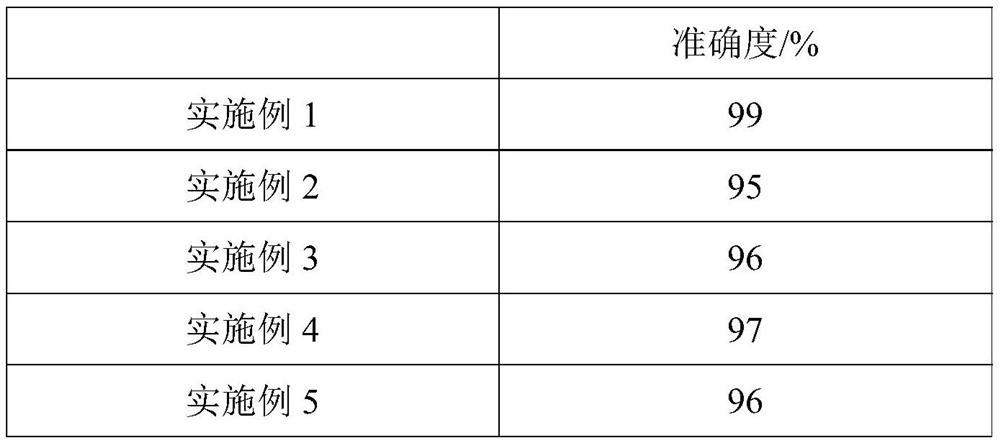A kind of detection method of hexavalent chromium in soil
A detection method and hexavalent chromium ion technology, applied in the field of hexavalent chromium detection, can solve the problems of engineering acceptance accuracy interference, inaccurate analysis and detection results, etc., and achieve the effects of rapid detection, reduced interference, and accurate hexavalent chromium concentration.
- Summary
- Abstract
- Description
- Claims
- Application Information
AI Technical Summary
Problems solved by technology
Method used
Image
Examples
Embodiment 1
[0030] A detection method for hexavalent chromium ions, comprising the following steps:
[0031] (1) Take 2.5g of the soil sample reduced by ferrous sulfate, put it in a 4cm*6cm porcelain boat, and spread the soil evenly;
[0032] (2) The sample is placed in a tube furnace, and air is introduced at a flow rate of 6L / min;
[0033] (3) heating up to 100°C at a heating rate of 10°C / min, and keeping it warm for 72 hours to obtain pretreated soil;
[0034] (4) Add 0.4g of MgCl to the pretreated soil 2 , 0.5ml potassium dihydrogen phosphate buffer solution, add 50ml pH 12 by NaOH and Na 2 CO 3 The mixed alkali solution formed is subjected to alkali digestion and dissolution, heated at 95°C for 60 minutes, and solid-liquid separation;
[0035] (5) Add sulfuric acid solution after the liquid phase obtained by solid-liquid separation to constant volume, adjust the pH value to 2, add the acetone solution of diphenylcarbazide, develop color, constant volume, and measure the absorbanc...
Embodiment 2
[0037] A detection method for hexavalent chromium ions, comprising the following steps:
[0038] (1) Take 2.5g of soil samples reduced by calcium polysulfide, put them in a 4cm*6cm porcelain boat, and spread the soil evenly;
[0039] (2) The sample is placed in a tube furnace, and air is introduced at a flow rate of 6L / min;
[0040] (3) heating up to 100°C at a heating rate of 10°C / min, and keeping it warm for 72 hours to obtain pretreated soil;
[0041] (4) Put the pretreated soil in 200ml, add 0.4g of MgCl 2 , 0.5ml potassium dihydrogen phosphate buffer solution, add 50ml pH 12 by NaOH and Na 2 CO 3 The mixed alkali solution formed is subjected to alkali digestion and dissolution, heated at 90°C for 60 minutes, and solid-liquid separation;
[0042] (5) Add sulfuric acid solution after the liquid phase obtained by solid-liquid separation to constant volume, adjust the pH value to 2, add the acetone solution of diphenylcarbazide, develop color, constant volume, and measure...
Embodiment 3
[0044] A detection method for hexavalent chromium ions, comprising the following steps:
[0045] (1) Take 2.5g of the soil sample reduced by sodium sulfide, put it in a 4cm*6cm porcelain boat, and spread the soil evenly;
[0046] (2) The sample is placed in a tube furnace, and air is introduced at a flow rate of 6L / min;
[0047] (3) heating up to 100°C at a heating rate of 10°C / min, and keeping it warm for 72 hours to obtain pretreated soil;
[0048] (4) Put the pretreated soil in 200ml, add 0.4g of MgCl 2 , 0.5ml potassium dihydrogen phosphate buffer solution, add 50ml pH 12 by NaOH and Na 2 CO 3The mixed alkali solution formed is subjected to alkali digestion and dissolution, heated at 90°C for 60 minutes, and solid-liquid separation;
[0049] (5) Add sulfuric acid solution after the liquid phase obtained by solid-liquid separation to constant volume, adjust the pH value to 2, add the acetone solution of diphenylcarbazide, develop color, constant volume, and measure the ...
PUM
| Property | Measurement | Unit |
|---|---|---|
| adsorption | aaaaa | aaaaa |
Abstract
Description
Claims
Application Information
 Login to View More
Login to View More - R&D
- Intellectual Property
- Life Sciences
- Materials
- Tech Scout
- Unparalleled Data Quality
- Higher Quality Content
- 60% Fewer Hallucinations
Browse by: Latest US Patents, China's latest patents, Technical Efficacy Thesaurus, Application Domain, Technology Topic, Popular Technical Reports.
© 2025 PatSnap. All rights reserved.Legal|Privacy policy|Modern Slavery Act Transparency Statement|Sitemap|About US| Contact US: help@patsnap.com


